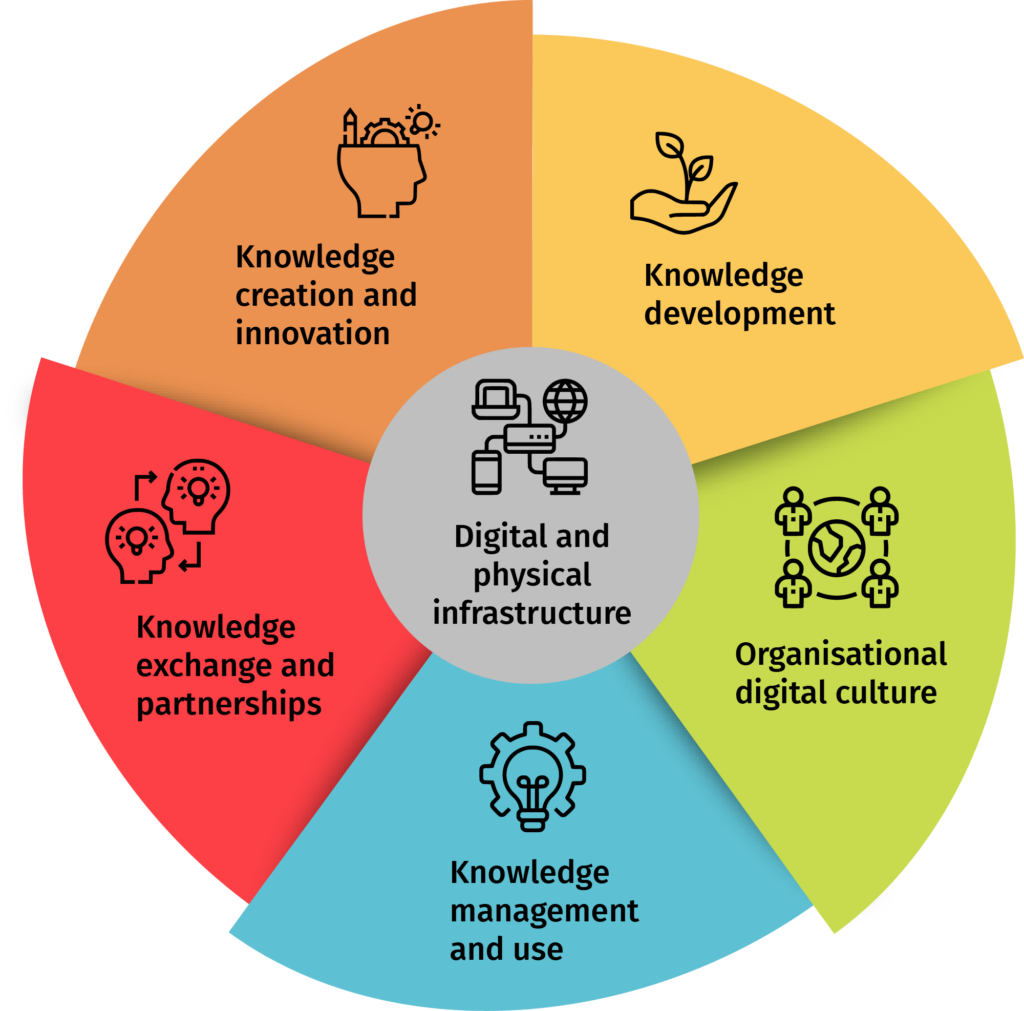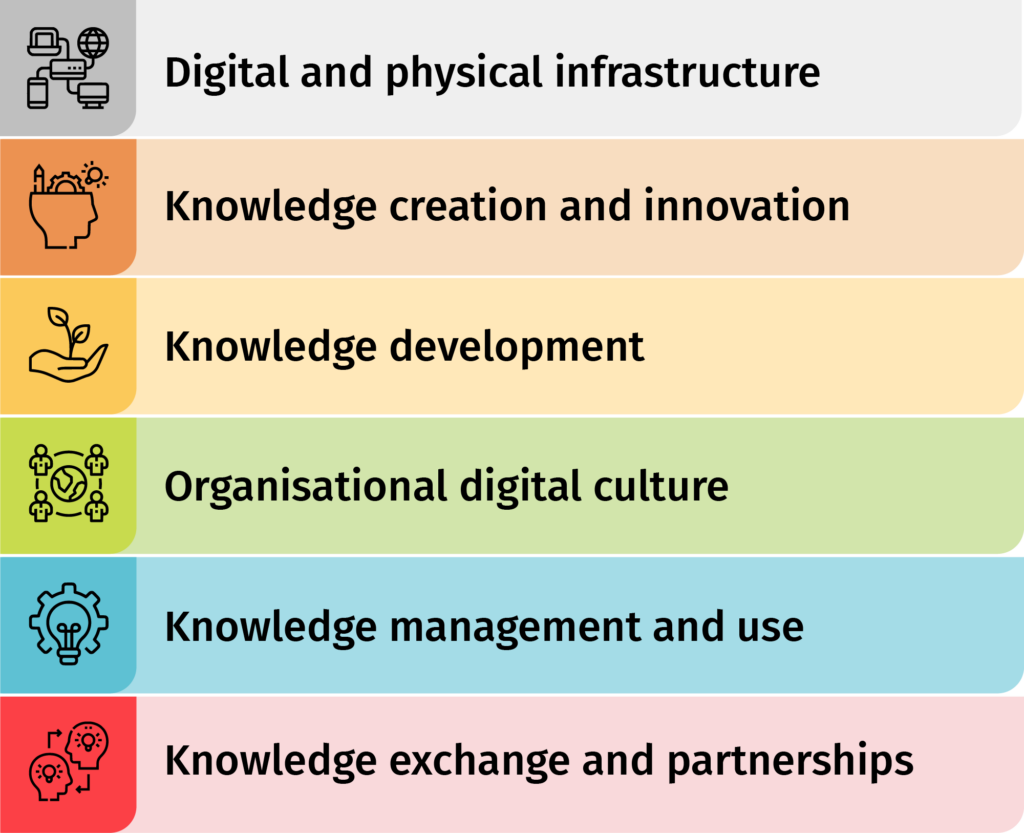Your institution has invested in Moodle but is it truly delivering the best learning experience for students and educators?
Many Higher Education institutions face challenges such as inconsistent engagement, inefficient course design, or a lack of clear insights into LMS performance. Without a structured way to evaluate and enhance your Moodle setup, it’s easy to overlook critical areas for improvement.
This is where evaluation frameworks come in. They provide a systematic approach to assessing your LMS’s effectiveness, helping institutions align their Moodle platform with their strategic teaching and learning goals.
The Moodle Maturity Framework, developed by Catalyst IT, is a free self-assessment tool designed to help institutions understand their Moodle strengths, pinpoint areas for growth, and make data-driven improvements.
What Are Evaluation Frameworks, and Why Are They Important?
An evaluation framework is a structured methodology for assessing the effectiveness of a system in this case, your Moodle platform.
It helps institutions:
Benchmark LMS performance against best practices.
Identify gaps in digital learning delivery.
Standardise quality assurance processes across faculties and departments.
Support strategic decision-making by ensuring Moodle is aligned with institutional goals.
Many organisations struggle with knowing where to focus their efforts. A maturity framework provides clear, actionable insights to help prioritise improvements that will have the biggest impact.
The Moodle Maturity Framework: A Systematic Approach
At Catalyst IT, we recognised the need for a structured way to evaluate Moodle maturity so we built one.
The Moodle Maturity Framework is based on established digital learning frameworks, including JISC’s Digital Maturity Framework, but adapted specifically for Moodle Learning Management System.
The framework evaluates your Moodle implementation across six key domains:
Infrastructure – Is your Moodle platform Secure, Stable and Scalable?
Teaching & Learning – Does Moodle effectively support pedagogical best practices?
Organisational Culture – Is there a strong digital learning mindset within your institution?
Assessment Strategies – Are assessments designed to drive engagement and learning outcomes?
Data & Analytics – Are insights being leveraged for continuous improvement?
Knowledge Management & Collaboration – Does Moodle foster knowledge sharing across teams?
The self-assessment process provides institutions with a clear maturity score, categorising their Moodle implementation as Emerging, Established, or Mature, similar to a bronze, silver, or gold standard.
Visualising the Six Key Areas
To help illustrate how these domains work together, the diagram below highlights the core areas of Moodle maturity and their interconnected role in shaping an effective digital learning environment:

How the Self-Assessment Works
Completing the Moodle Maturity Framework is simple, fast, and free.
Step 1: Sign Up – Register via our Moodle Maturity Framework page to receive access.
Step 2: Answer Key Questions – Assess your institution across six maturity areas.
Step 3: Collaborate for Success – Involve key stakeholders (e.g., IT teams, learning designers, educators) for a well-rounded evaluation.
Step 4: Receive Your Report – Get a visual breakdown of your Moodle maturity level, along with tailored recommendations.
Step 5: Take Action – Use the insights to optimise your Moodle setup and plan your next steps with Catalyst’s expert Digital Learning team.
A Breakdown of the Six Maturity Domains
Each evaluation domain plays a crucial role in the assessment process. The graphic below outlines these six key areas and their focus:

By understanding these areas, institutions can pinpoint their strengths, address key challenges, and develop a strategy for continuous improvement.
The Benefits of Evaluating Your Moodle Maturity
Adopting a maturity framework isn’t just about understanding where you are it’s about creating a roadmap for improvement.
Quality Assurance & Benchmarking – Ensure Moodle is delivering on its full potential.
Strategic Planning – Identify where to invest resources for maximum impact.
Resource Optimisation – Focus on areas that drive meaningful improvement.
Enhanced Stakeholder Buy-In – Demonstrate Moodle’s value to decision-makers.
Future-Proofing – Stay ahead of evolving digital learning trends.
Institutions that proactively assess and enhance their Moodle setup see higher student engagement, improved learning outcomes, and a more seamless digital learning experience.
The Moodle Maturity Framework helped us identify the strengths of our LMS as well as areas where we need to improve.
Lisa Donaldson, Director of Learning Technologies, City Education Group
Watch the MoodleMoot Global Talk: How Mature Is Your Moodle?
Frequently Asked Questions (FAQs)
Who should complete the Moodle Maturity self-assessment?
The self-assessment is designed for Higher Education institutions, Learning and Development teams, and organisations using Moodle. Ideally, a cross-functional team including IT Directors, Heads of Digital Learning, Learning Technologists, and Educators should collaborate to ensure a comprehensive evaluation.
How long does the assessment take?
The self-assessment typically takes under 30 minutes to complete. It is structured into six key areas, allowing different team members to contribute their expertise where relevant.
What do I get after completing the assessment?
Once completed, you’ll receive:
– A detailed Moodle Maturity report outlining your current LMS strengths and areas for improvement.
– Graphical insights to benchmark your Moodle setup.
– Actionable recommendations for optimising your platform.
How is the Moodle Maturity Framework different from other digital learning evaluations?
Unlike generic digital maturity models, the Moodle Maturity Framework is:
– Specifically designed for Moodle users, ensuring relevance to your LMS.
– Aligned with JISC’s Digital Maturity framework, making it highly applicable to Higher Education.
– Free and accessible, with no hidden costs.
Do I need technical expertise to complete the assessment?
Not at all! The assessment is structured to be accessible to all stakeholders, from IT specialists ensuring system stability to Learning Technologists focusing on pedagogy and engagement.
What happens after I get my results?
Your results will provide a clear picture of your Moodle’s maturity level, but the real value comes from taking action. Our Catalyst IT Europe Digital Learning team can help you interpret your results and create an improvement roadmap tailored to your institution’s goals.
How do I get started?
Simply visit our Moodle Maturity Framework page, fill out the sign-up form, and receive immediate access to the assessment.
Still have questions? Contact us for expert guidance on making the most of your Moodle platform.
Get Started: Assess Your Moodle Maturity Today
Want to take your Moodle to the next level? The Moodle Maturity Framework is free to access and provides clear, actionable insights tailored to your institution.
Discover how mature your Moodle is, complete the self-assessment and receive your tailored maturity report.

